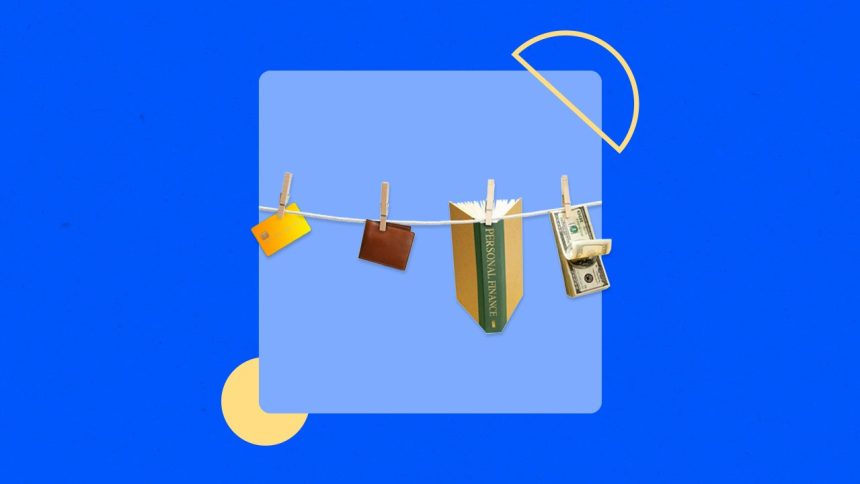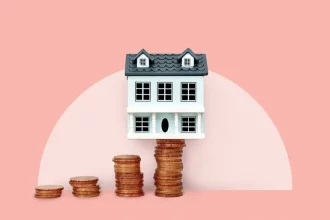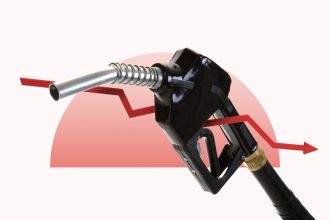Key takeaways
- Both a line of credit and a credit card are types of revolving credit where you can borrow up to a certain amount and only pay interest on what you borrow.
- A line of credit typically has a lower APR and a higher credit limit than a credit card, but a credit card offers more convenience, a grace period and potential rewards for spending.
- A line of credit may require more documentation and a personal credit check for approval, while a credit card is easier to obtain.
A line of credit and a credit card are similar types of revolving credit. With both, you’re approved to borrow up to a certain amount, but you don’t have to borrow any money immediately after you’re approved. You can choose when to borrow and how much, up to the account limit. You’ll only pay interest on the amount you borrow, and you can borrow again and again as long as you don’t owe more than the limit.
However, there are some important differences between a line of credit and a credit card. Here’s what you need to know.
Line of credit vs. credit card
One of the most notable differences between the two is that, while a credit card is connected to (and allows you to access) a line of credit, it’s possible to open a line of credit that doesn’t have a credit card associated with it.
In short:
All credit cards are lines of credit, but not all lines of credit are credit cards.
Here’s a breakdown of some of the most important differences between the two:
| Line of credit | Credit cards | |
| Credit terms and limits | While terms vary by lender, the APR on a line of credit is often lower than the APR for credit cards. Thus, credit lines may be better suited to large purchases that you intend to pay off over time. | The credit limit for a credit card may be lower than for a line of credit. And credit cards average an APR of just over 20 percent. |
| Access and rewards | Lines of credit do not offer a grace period, nor any types of rewards. |
Credit cards often give you a grace period during which you can avoid paying interest. And many credit cards offer cash back or other rewards for spending. |
| Application requirements | Applying for a line of credit without a credit card typically requires documentation to prove your income. This means it can be a little more complicated and time-consuming. | Applying for a credit card requires you to provide accurate information about your finances. This process can take as little as a few minutes. |
What is a line of credit?
A line of credit is a financial product that allows you to borrow money repeatedly. You can borrow up to a certain limit, and then you’ll repay what you owe. You can continue drawing on the line of credit as long as the amount you owe doesn’t go over your limit. You’ll pay interest on the money you borrow, and you may be charged a fee for using a credit line.
How does a line of credit work?
Your issuer may give you checks you can write to access your line of credit. You can also have money deposited into your bank account by requesting a transfer in person, by phone or through your bank’s website. You may also be able to arrange for your bank or credit union to automatically draw on your credit line to cover overdrafts on your checking account.
Lines of credit can be secured or unsecured. For example, home equity lines of credit (HELOC) are secured by your home. HELOCs usually come with variable interest rates, but banks sometimes offer a fixed-rate option on part or all of your balance.
A personal line of credit (PLOC) is typically not secured. To be approved, you may need to have an existing checking account with the bank or credit union that’s issuing the credit line. After you borrow, you’ll receive a bill each month, and you’ll need to make at least a minimum monthly payment. The interest rate can generally rise or fall depending on market conditions.
Does a line of credit affect your credit score?
Yes, opening a new line of credit can affect your credit score in positive and negative ways, which will affect how you manage that credit moving forward. Here’s how a line of credit affects your credit score:
- New inquiry: When you apply for a line of credit, the lender makes a hard inquiry on your credit history, which will appear on your credit report for up to two years.
- Length of credit history: Opening a new line of credit decreases the average age of your accounts. This can lower your credit score, particularly if you don’t have a lengthy credit history.
- Credit mix: When you open a credit line, you add a revolving credit account to your credit history, which can improve your credit mix if you didn’t previously have any revolving accounts. Having a variety of different types of accounts to your name may raise your credit score.
- Amounts owed: Drawing on a personal line of credit affects your credit utilization ratio, which is the amount of revolving credit you’re using in relation to your credit limit. Having a large amount of debt from a HELOC or other accounts can lower your credit score.
- Payment history: Making on-time monthly payments on your line of credit is the most significant factor in your credit score (35 percent), so late or missed payments will cause your score to fall, in some cases even up to 100 points.
When should you use a personal line of credit?
A personal line of credit can be useful when:
- You need to make a large purchase
- You need to pay for an emergency
- You can’t predict the exact dollar amount you’ll need to borrow upfront
Maybe you have to pay for surprise home repairs or medical treatments, for example, but you aren’t sure of the bills you’ll get or the total cost.
A personal line of credit gives you more flexibility than a one-time personal loan, and the terms may be more favorable than a credit card when it comes to carrying a large balance you need to pay off over time.
What is a credit card?
A credit card is a payment method that allows you to draw on a line of credit to make everyday purchases online, over the phone and in person. You can charge payments to a card by physically swiping, inserting or tapping the card at a terminal, or by entering the card’s number, expiration date and security code into an online payment form. These payments add to the account balance and reduce the available credit by the amount of the purchase.
How does a credit card work?
Each billing cycle, cardholders will receive an account statement. Many credit cards offer a grace period on purchases, meaning that interest isn’t charged if the cardholder pays the entire balance by the due date. If the cardholder pays less than the full balance, they’ll lose the grace period and the balance will begin accruing interest. Cardholders must make at least a minimum payment every billing cycle by the due date, or they’ll typically face late fees and may be subject to a penalty APR. Missed payments may also be reported to the three major credit bureaus and could impact your credit score.
Some credit cards offer rewards that you can earn by charging purchases to the card. Depending on the type of card, you may earn cash back, points or miles on purchases, which you may be able to redeem for statement credits, travel, merchandise, gift cards and more.
How does a credit card affect your credit score?
A credit card account can affect your credit score much like a line of credit. As with a line of credit, taking out a new credit card gives you a revolving account. If you previously lacked a form of revolving credit on your record, this improves your credit mix and may raise your score. But you will likely have to undergo a hard inquiry during the application process, which may temporarily drop your credit score.
Most importantly, paying your credit card bill on time each billing cycle will positively contribute to your payment history and can boost your score. Paying your balance on time and in full keeps you out of debt, means no interest owed and helps build a healthy credit score.
When should you use a credit card?
Credit cards are useful when you want to have a means of payment on hand without carrying cash. It’s smart to use a credit card for everyday spending as long as you’ll be able to pay your credit card bill in full each month. That way, you’ll avoid paying interest, and you won’t run up credit card debt you can’t afford to pay off.
Using a top cash back credit card is a great way to get rewarded for your spending, especially when you can earn big in categories you tend to spend money on anyway, like groceries, dining or gas. Or, if you have a large purchase in mind, it can be worth finding a credit card that offers a 0 percent intro APR on purchases for a limited time so you can pay off the balance over time without interest.
Credit cards also provide more significant protections against fraud than some other payment methods, including debit cards. Most credit card issuers offer cardholders $0 fraud liability. Thus, a credit card is often a good choice if you’re concerned about security, such as when traveling or shopping at online retailers.
Should you consider alternatives to credit?
If you’ve considered a credit card and a personal line of credit and neither seem like a great option, it may be time to explore alternatives to borrowing.
- Work on saving. One possible approach is to save up for a big purchase rather than financing it. The drawback is that you’ll have to wait until you have sufficient funds to buy the item. On the plus side, you won’t pay interest.
- Find community resources. You could see if your community has a freecycle group, buy nothing group or a mutual aid group. These organizations sometimes offer used furniture or appliances that other group members no longer need.
- Rent what you need. If you can’t afford to buy a product you need for a short time, you could look into renting it. A wide variety of items are available to rent, from sports gear and home improvement tools to wedding dresses and textbooks.
- Ask for a direct payment plan. If you need money for necessities like utility bills or medical care, you could ask for help. Utility companies and hospitals often provide financial assistance to people who aren’t able to pay full price. If you don’t qualify for a discount, they may offer you a payment plan with better terms than you’d get from a credit card issuer or bank.
The bottom line
While both allow you to borrow money up to a set limit, there is a difference between a line of credit and a credit card. Whereas a line of credit may be more beneficial for large purchases and has a lower APR, a credit card offers convenience, a grace period, and rewards for spending. Regardless of how you choose to borrow, however, it’s always best to carefully consider your financial situation before you decide to take out a line of credit or open a new card.
Frequently asked questions about credit
Read the full article here
















